The mountain climber is a compound body-weight move that is sure to raise your heart rate while building strength through your arms, back, shoulders, core, and legs. In addition to boosting cardio and strength in one move, this low-impact exercise also challenges balance and coordination and is suitable for small-space or no-equipment routines.
Despite these benefits, many people find the mountain climber hard to love. It is, in a word, intense. Running in place while holding a plank position for just 20 seconds can leave even dedicated exercisers breathless and spent.
For most people, though, it’s not the difficulty that creates problems. It’s the misconceptions that you must do it fast (you needn’t) and that it’s too basic for form to matter (it’s not).
As with actual running, it’s important to find a right-for-you pace that you can maintain for the duration of an interval or for the number of prescribed repetitions in your workout. And as with any other strength move, proper form helps ensure that your effort will be effective and won’t cause injury.
Once you nail your form, increase your speed (while maintaining control) to increase the cardio challenge. Or slow way down and emphasize the hold at the top of the knee drive to further challenge your stability.
Refine your form with the tips below. While they won’t necessarily make you fall in love with the move, they’ll likely help you enjoy more benefits from your hard work.
Instructions
- Assume a high-plank position with your wrists under your shoulders and your body forming a straight line from head to heels. Keep your shoulders over your wrists and press your hands into the floor. Don’t let your shoulders drift back behind your hands and be sure to maintain a neutral neck position.
- Keep your hips low and stable. Don’t let them shift higher than shoulder height or into a pike position.
- Engage your core and drive one knee toward your chest or same-side elbow. Keeping the raised foot elevated, hold for a moment.
- Return your raised foot to the ground and simultaneously drive the opposite knee forward. Hold for a moment, and repeat. (Avoid unnecessary bouncing or kicking when you switch feet.)
- Alternate sides for the desired number of reps or the duration of your interval. (Try performing 20 total reps or doing the move for 20 seconds.)
Mix It Up
Mountain Climber Sprawl
This variation combines a slow and controlled mountain climber with a squat to build hip mobility. In addition to making it part of a workout like the standard mountain climber, you can incorporate it as part of a warm-up or do it throughout your day to break up bouts of sitting.
- Begin standing with feet hip-width (or wider) apart.
- Lower yourself into a deep squat, aiming to get your hips as low as you can while maintaining an upright torso.
- Place your hands on the floor with wrists directly under your shoulders. They’ll likely be between your feet or slightly in front, depending on your mobility, and your knees will likely snuggle up against your triceps.
- Without shooting your hips up or pressing them down toward the floor, step one foot back into a low lunge. Hold for a moment, then step the back foot back to its starting position by your hands. You’ll be back in a deep squat with hands on the floor at this point.
- Repeat, extending the opposite leg behind you. Hold for a moment, then return to the squat. Lift your hands off the floor and stand up with control.
- Repeat for the desired number of reps (five to 10 is a good place to begin), alternating legs within each repetition.
- If it’s hard to reach the floor, you can use yoga blocks, a low box, or even a couple of books to plant your hands.
Mountain Climber Sprawl With Deadlift
This variation progresses the sprawl described above by adding a strength move: the deadlift. The key, again, is to move slowly and with control. It’s less about creating a cardio effect (though it will likely still raise your heart rate) than building mobility and strength. Make sure you are very comfortable with the basic sprawl and with kettlebell deadlifts before doing this move.
- Begin standing with feet about hip-width apart, with a kettlebell placed between your feet.
- Lower yourself into a deep squat, aiming to get your hips as low as you can while maintaining an upright torso.
- Place your hands on the floor with wrists directly under your shoulders.
- Without shooting your hips up or pressing them down toward the floor, step one foot back into a low lunge. Hold for a moment, then step your back foot back to its starting position.
- Repeat, extending the opposite leg behind you. Hold for a moment, then return to the squat.
- Lift your hands off the floor and grasp the kettlebell. Shift your hips up and back to assume the hip-hinged starting position for a deadlift.
- Press your feet into the floor to lift the kettlebell and come to standing.
- Hinge at your hips to lower the kettlebell to the floor.
- Stand up without the weight, then repeat the sequence for the desired number of reps.
Mountain Climber With Toe Tap
While the standard mountain climber calls for keeping your front foot elevated, allowing your front toes to briefly tap the floor is great modification for some people. It can help lighten the intensity of abdominal engagement and offers additional balance as you switch feet. But be careful not to relax too much — keep the core engaged and don’t let your hips sag or press toward the floor.
- Assume a high-plank position with your wrists under your shoulders and your body forming a straight line from head to heels.
- Engage your core and drive one knee toward your chest. Keeping the raised foot elevated and flexed, hold for a moment.
- Return your raised foot to the ground and simultaneously drive the opposite knee toward your chest. Hold for a moment, and repeat.
- Alternate sides for the desired number of reps or the duration of your interval.
Mountain Climber on Forearms
While the standard mountain climber is performed in a high-plank position, with arms extended and shoulders over planted hands, performing the move with your forearms on the ground is especially useful for people who can’t (or don’t want to) flex at the wrists. You’ll likely notice that you no longer have space to draw a knee into the chest, so bring your knee toward your same-side elbow. Remember to stay active through the shoulders by pressing into the floor with your forearms and continuing to engage your core.
- Assume a forearm plank position with your elbows directly under your shoulders and your body forming a straight line from head to heels. You can face your palms to the floor and actively press through your fingertips or clasp your hands in front of you.
- Engage your core and drive one knee toward the same-side elbow. Keeping your raised foot elevated and flexed, hold for a moment.
- Return your raised foot to the ground and drive the opposite knee toward its corresponding elbow. Hold for a moment, and repeat.
- Alternate sides for the desired number of reps or the duration of your interval.
Slider Mountain Climber
If eliminating the bounce from your mountain climber is a challenge, or if maintaining proper alignment and keeping your hips low is a no-go, this variation is for you. Placing your feet on sliders can help you focus on keeping your torso engaged and stable without letting the foot hop distract you.
- Assume a high-plank position with your wrists under your shoulders, your body forming a straight line from head to heels, and the balls of your feet firmly planted on exercise sliders, hand towels, or even two paper plates. (You’ll want to set up where you have a somewhat slippery surface, like a rug or mat.)
- Engage your core and drive one knee toward your chest or same-side elbow without lifting that foot. Bring your knee forward as far as you can and hold for a moment.
- Return your foot and slider to the starting position, and simultaneously drive the opposite knee forward. Hold for a moment, and repeat.
- Alternate sides for the desired number of reps or the duration of your interval.
Cross-Body Mountain Climber
In this advanced variation, you’ll further challenge your core strength and your balance by drawing your elevated knee toward the opposite-side elbow. The key word here is “toward”: You will want to move in the direction of that elbow, but you may not necessarily reach it. Make sure not to compromise form to force your knee to touch your elbow, for instance by sagging your hips or shoulders to get a little more reach.
- Assume a high-plank position with your wrists under your shoulders and your body forming a straight line from head to heels.
- Engage your core and drive one knee toward the opposite-side elbow. (It’s OK if your knee doesn’t touch your elbow.) Keeping the raised foot elevated and flexed, hold for a moment.
- Return your raised foot to the ground and simultaneously drive the other knee toward its opposite-side elbow. Hold for a moment, and repeat.
- Alternate sides for the desired number of reps or the duration of your interval.
Burpee Mountain Climber
This advanced variation combines the mountain climber with another “love-to-hate” exercise: the burpee. Make sure you have a good handle on both burpee and mountain climber form before combining the two. (For a burpee refresher, visit “Fitness Fix: How to Do a Burpee“.) Prioritize control of the movement over speed; coordinating this combo can be a little tricky at first, so move slowly until you get it.
- Assume a shoulder-width, athletic stance.
- Keeping your lower back in its natural arch, bend at your hips and knees and place your hands on the floor.
- Jump your feet backward into a high-plank position: feet at shoulder width, body straight from your head to your heels, hands and the balls of your feet on the floor.
- Lift one foot from the floor and quickly draw your knee as close as possible toward your chest, then back to pushup position.
- Repeat the move on the other side.
- Jump your feet forward to a squat position.
- Stand up, and repeat the sequence for the desired number of reps.
(Not a fan of traditional burpees? Try this playful variation that delivers similar strength and cardio benefits — minus the pushup.)
Workouts to Try
Want to put your improved mountain climber form to work? Try one of these workouts that incorporates the move:
- How to Do a 30-Minute Walking Workout
- The Countdown Workout
- The Minimalist Workout
- The No-Swing Kettlebell Workout
This article originally appeared as “The Mountain Climber” in the April 2022 issue of Experience Life.
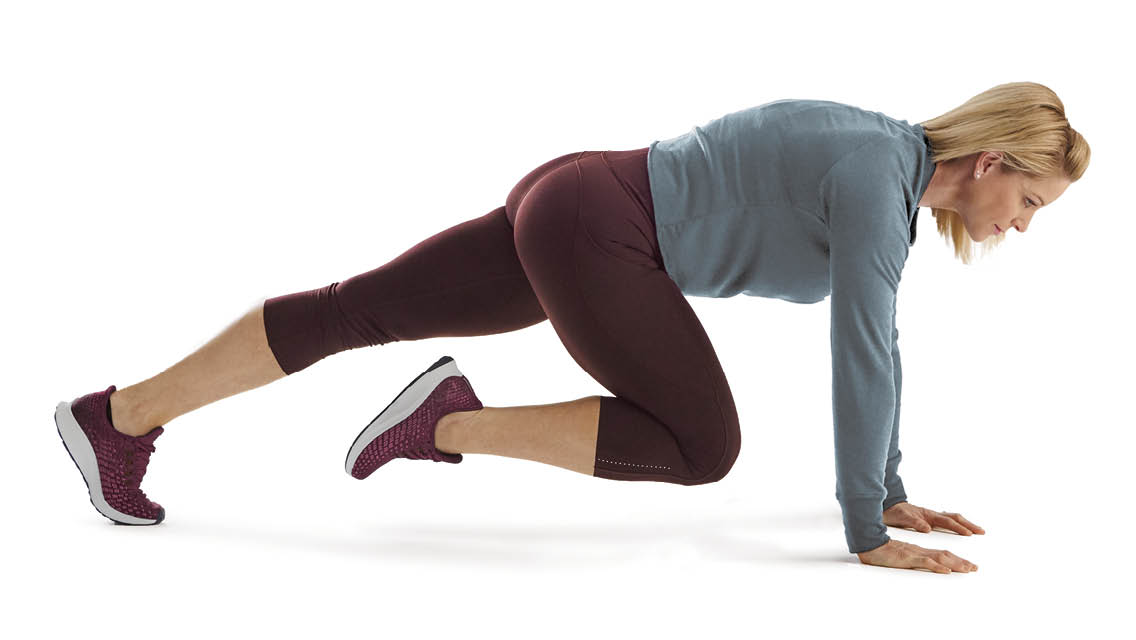

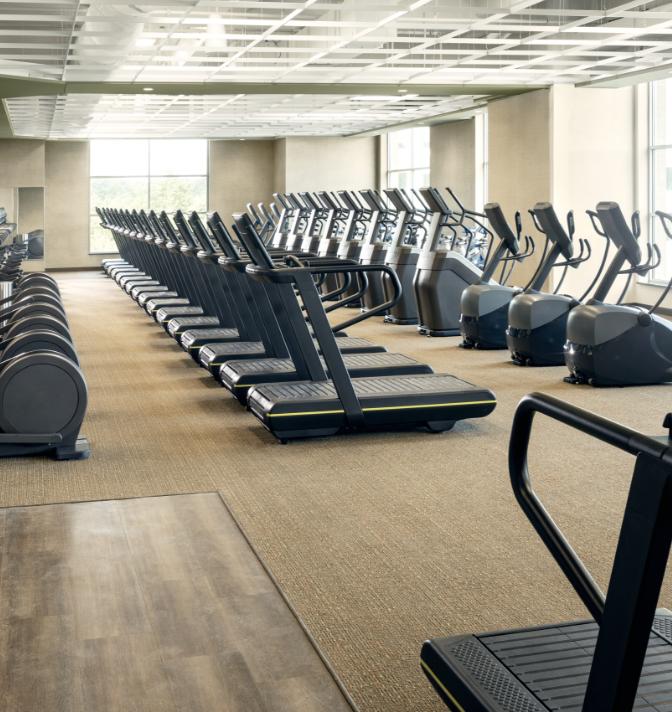
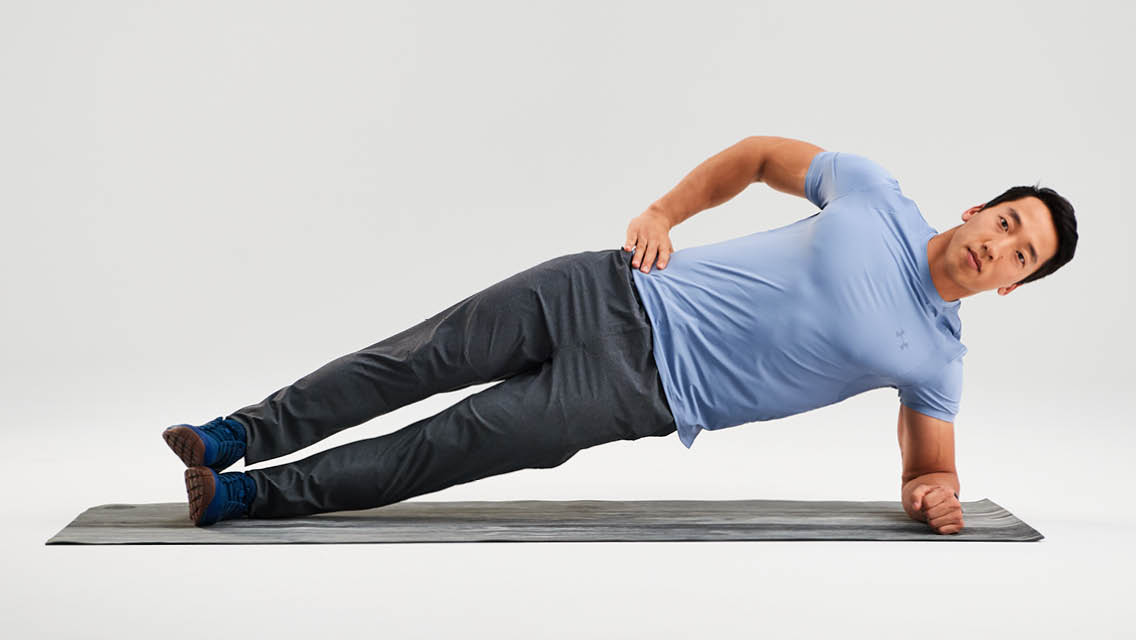
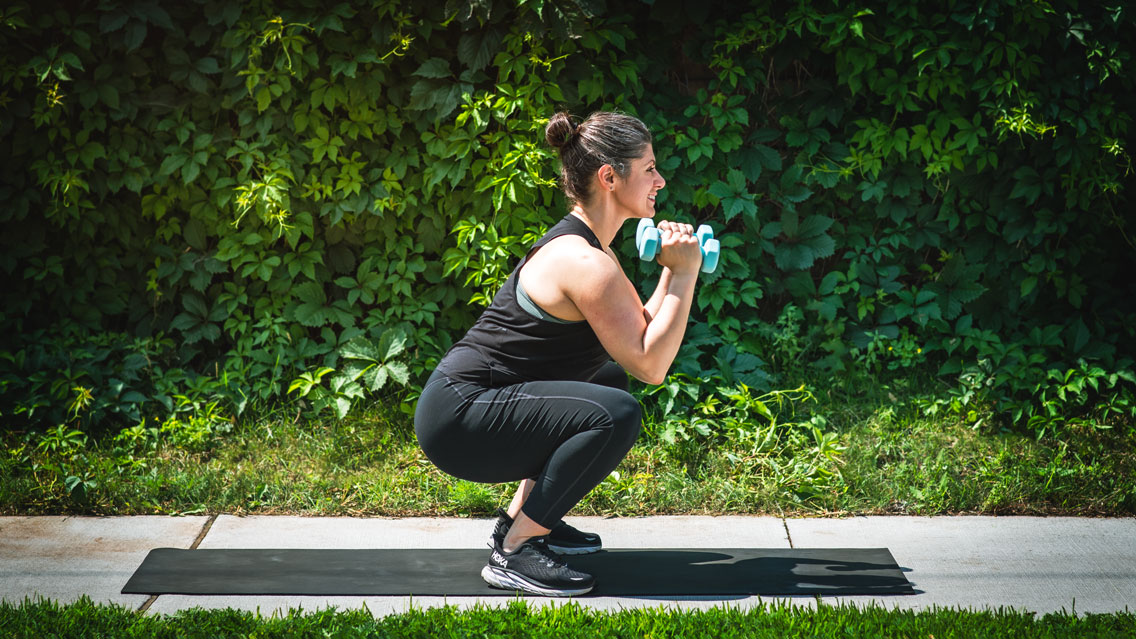
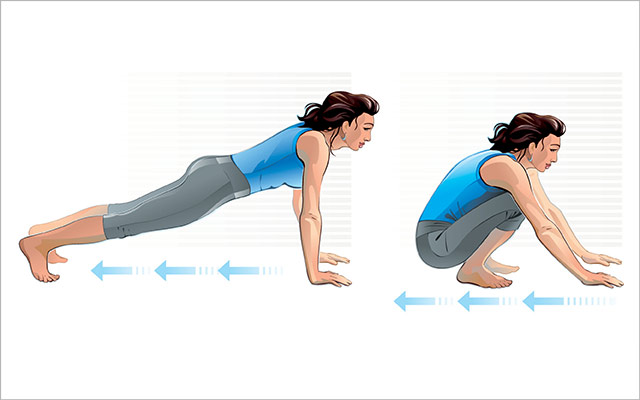
This Post Has 0 Comments